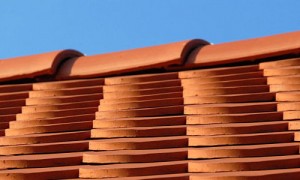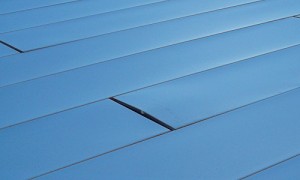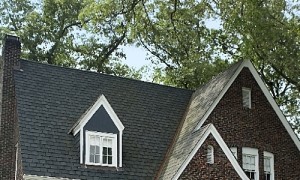I’ve become very curious after a trip to the Atlanta Botanical Garden where one can see a green roof, or a living / vegetated roof as some people refer to them, to understand the environmental benefits of this type of green construction. Although it doesn’t appear right now to be a widely adopted feature of residential homes in the United States, it does seem to be taking hold in some urban areas of the country. According to GreenRoofs.org, the North American green roofing industry grew by 10 percent in 2013 over 2012. And certain U.S. cities are pulling away from the pack in adoption rates of this roofing choice – specifically Washington, D.C. (No. 1). Rounding out the top five cities installing the most square footage of green roofs in 2013 were: Chicago (No. 2), New York (No. 3), Philadelphia (No. 4), and Boston (No. 5).
Since doing some online research to understand the benefits of green roofs, I’ve come to learn there is a rainbow of roofing types: white roofs, blue roofs, brown roofs, black roofs and of course green roofs. In a recent study by Lawrence Berkeley National Laboratory (Berkeley Lab), researchers found that white roofs are the most cost effective of them all yet acknowledges that their research was only economic based and didn’t take into consideration the environmental and health factors that green roofs only offer. GreenRoofs.org points out in the white vs. green debate that white roofs “can actually result in a net loss in cooler climates during winter months, thereby increasing energy usage.”
Here are three benefits of green roofing that stood out to me.
- One of the major benefits to a green roof is stormwater management. You would think local governments, in cities like Atlanta and Savannah (both of which I’ve lived and are prone to major flooding on residential streets during summer storms), would find this a wonderful solution to their cities’ water overflow issues and offer incentives to homeowners to offset costs for installation.
- Heard about the Urban Heat Island – sounds like a place you might want to go this upcoming 4th of July weekend, right? Except this isn’t a place you lounge poolside with a summer cocktail. Green roofs help reduce the UHI effect by decreasing the number of black rooftops within a city. They also help cool cities and therefore lower the UHI effect.
- Green roofs reduce energy consumption in both the summer and winter. One Canadian study found that a green roof reduced the daily energy demand for air conditioning in the summer by more than 75 percent.







[…] to this problem, though, and it’s a solution that solves a few other problems, too: Adding a green roof to the top of a rowhouse in Philadelphia cuts down on the amount of rainwater that pours off roofs […]
[…] to this problem, though, and it’s a solution that solves a few other problems, too: Adding a green roof to the top of a rowhouse in Philadelphia cuts down on the amount of rainwater that pours off roofs […]
[…] to this problem, though, and it’s a solution that solves a few other problems, too: Adding a green roof to the top of a rowhouse in Philadelphia cuts down on the amount of rainwater that pours off roofs […]
[…] to this problem, though, and it’s a solution that solves a few other problems, too: Adding a green roof to the top of a rowhouse in Philadelphia cuts down on the amount of rainwater that pours off roofs […]